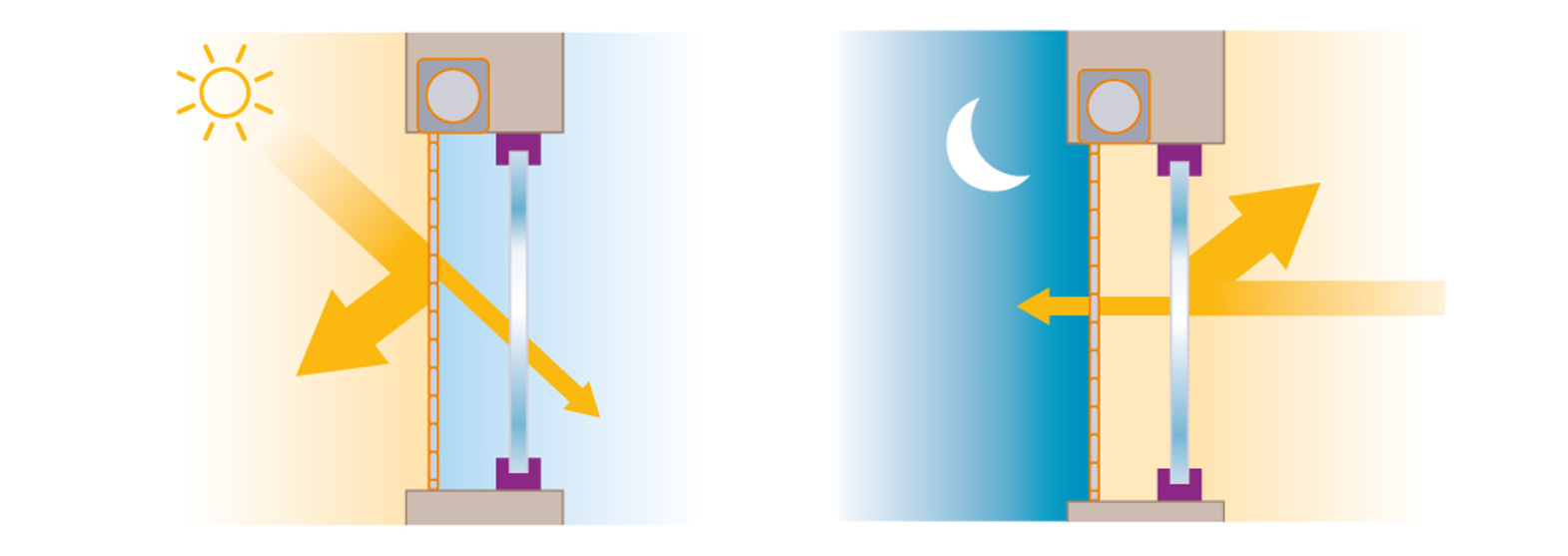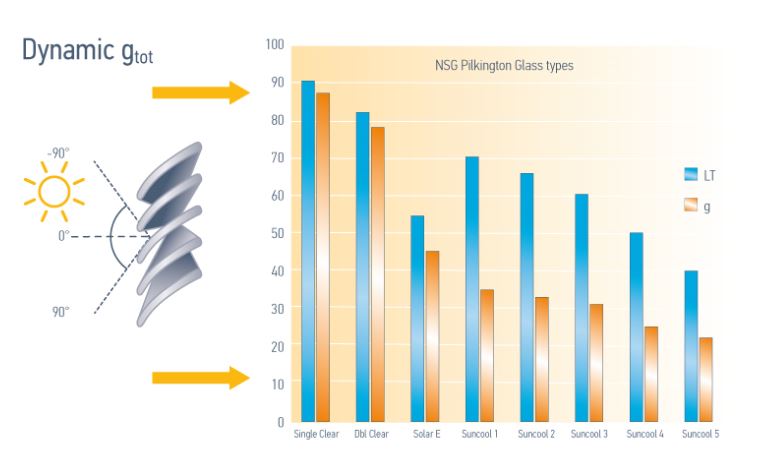Energy savings through heat gain management
Dynamic solar shading is a must to create a high performance facade!
The windows in a facade are the weakest link in terms of energy transfer, in both directions. Modern glass has developed at an impressive pace, yet glass can still not offer the dynamic g, U and LT values needed to optimize both indoor climate and energy performance throught the year.
The only way to solve this is by applying an intelligent combination of dynamic solar shading, appropriate glass type and presence-controlled heating, cooling and light. The market demands innovative energy efficient solutions and solar shading meets the needs of the commercial industry.
Our dynamic cooling and heating strategies aim to reduce the energy consumption rate that is required to operate a building, while ensuring a comfortable climate for the occupants. Basically, this can be summarized as: supporting cooling when this is required, and supporting heating when this is required (you can read more about dynamic insulation below):

- Comfort and energy efficiency during the cold season calls for a heating strategy: capturing solar heat gain, storing it in thermal mass, retaining it through insulation and transmitting it to the building as needed.
- Comfort and energy efficiency during the hot season calls for a cooling strategy by preventing unwanted heat gains from the sun and keeping the need for artificial cooling at a minimum.
 Austria - Deutsch
Austria - Deutsch Belgium - Nederlands
Belgium - Nederlands Czech Republic - Čeština
Czech Republic - Čeština Denmark - Dansk
Denmark - Dansk France - Français
France - Français Germany - Deutsch
Germany - Deutsch Hungary - Magyar
Hungary - Magyar Italy - Italiano
Italy - Italiano  Netherlands - Nederlands
Netherlands - Nederlands Norway - Norsk
Norway - Norsk Poland - Polish
Poland - Polish Portugal - Portugues
Portugal - Portugues Romania - Română
Romania - Română Russia - Русский
Russia - Русский Spain - Español
Spain - Español Sweden - Swedish
Sweden - Swedish Switzerland - Français
Switzerland - Français Turkey - Turkish
Turkey - Turkish Ukraine - Український
Ukraine - Український United Kingdom - English
United Kingdom - English Bahrain - English
Bahrain - English Egypt - English
Egypt - English Iran - English
Iran - English Jordan - English
Jordan - English Kuwait - English
Kuwait - English Lebanon - English
Lebanon - English Nigeria - English
Nigeria - English Oman - English
Oman - English Qatar - English
Qatar - English Saudi Arabia - English
Saudi Arabia - English South Africa - English
South Africa - English United Arab Emirates - English
United Arab Emirates - English United States - English
United States - English Mexico - Español
Mexico - Español Brazil - Português
Brazil - Português Australia - English
Australia - English New Zealand - English
New Zealand - English China - 中国
China - 中国 Hong Kong - English
Hong Kong - English India - English
India - English Indonesia - English
Indonesia - English Korea - Korean
Korea - Korean Malaysia - English
Malaysia - English Singapore - English
Singapore - English Taiwan - Chinese
Taiwan - Chinese

